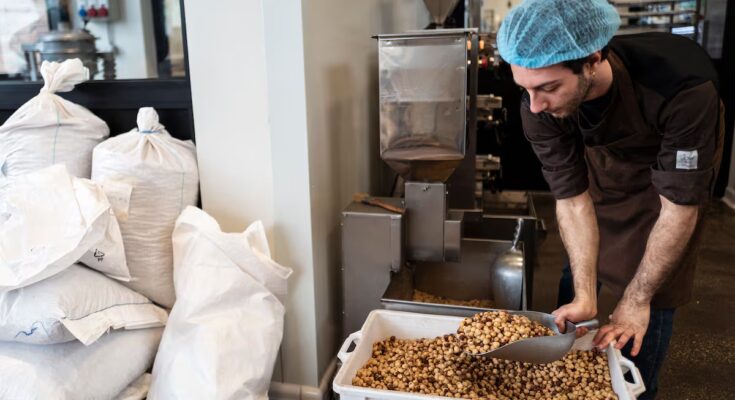The hazelnut is the queen of Italian agriculture: a structural element of the baking culture of the transalpine country and the soul of some of its most emblematic products. It is the basis of the iconic Nutella, of which tons are sold every year all over the world, of the Piedmontese gianduia and of nougats, chocolates, pastries, ice creams and countless desserts that are part of the Italian gastronomic imagination.
In a country where flavor is a defining characteristic, this small fruit is putting a strain on the robust candy industry, one of the crown jewels of the confectionery industry made in Italy. Both multinationals such as Ferrero – one of the largest candy companies in the world, which produces, among others, Nutella and Kinder products – and small artisan workshops that produce gianduiotto or chocolates lady’s bathroom They depend on a stable supply of quality hazelnuts. However, a fatal cocktail of economic, climatic and structural factors has triggered what is now known as “the hazelnut crisis”, with consequences that affect the entire confectionery sector supply chain. Production is going through an unprecedented situation, to the point that farmers’ associations have reported a drop in this year’s harvest of between 40% and 50%.
With the harvest almost complete, the first data speak of a total production of 70,000 tonnes, compared to an average of 120,000 tonnes in normal years. The Italian Confederation of Farmers (CIA) blames the devastation of 95,000 hectares of hazelnut groves on pests and climate change, with an unusually mild winter, heavy spring rains and a subsequent drought in June. “In July we started to see empty hazelnuts falling to the ground and, compared to a normal yield of 20 quintals per hectare, the harvest stopped at five quintals,” producer Daniela Ferrando told local media.
The situation is dramatic for a country like Italy, the world’s second largest producer of hazelnuts. The collapse in production has caused selling prices to skyrocket. Currently the average amount per quintal exceeds 500 euros, while last year it barely reached 400 euros. According to the first data from the Chamber of Commerce of Alessandria relating to this harvest, the value of hazelnuts is around 14 euros per yield point – the proportion between the hazelnut in shell and the clean fruit -, compared to 10 euros in 2024 and 7 euros in 2023.
In Turkey, the world’s leading producer, the situation is similar: due to spring frosts, the harvest decreased by 33%, going from 750,000 tonnes to less than 500,000. The Italian multinational Ferrero, the world’s largest consumer of this fruit, temporarily suspended purchasing hazelnuts from Turkey because their price had also doubled due to the shortage and chose to diversify and buy supplies from other countries such as Chile and the United States.
Worry
Faced with this panorama between the largest producer and the main consumer of this commercial center, who are the ones who end up determining prices, the other players in the hazelnut circuit fear that a tsunami is preparing which, in addition to shaking the commercial environment, with the Christmas campaign upon us, could move the epicenter of the hazelnut market to another continent, a possibility that keeps the sector in suspense, aware of the impact that such a change would have on the entire value chain.
For Italy, gastronomy, in addition to being a cultural heritage of great value, also represents a fundamental economic driver, contributing almost 20% to the national GDP through the entire food and tourism sector. It is also a tool of soft diplomacy, projecting the benefits of the Italian lifestyle to the world and attracting millions of visitors motivated by its cuisine and wines. Food has a central role in the daily life of the country and is one of the pillars of its narration of the excellence of the territory made in Italytogether with fashion, design and culture.
You can consult other letters in this section Here.



